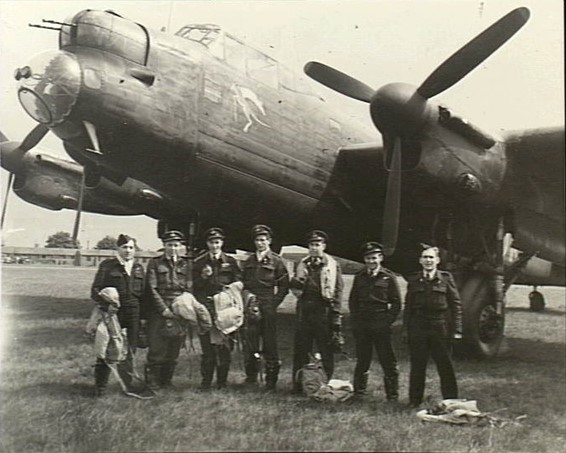
Director of the Australian War Memorial, Matt Anderson, senior curator Shane Casey and senior historian Dr Lachlan Grant look at the models at the Mitchell repository. Photograph: David Whittaker.
Rarely-seen 3D models, used by Dambusters pilots to familiarise their targets, have been revealed by the Australian War Memorial (AWM) to mark the 80th anniversary of the famous World War II raid.
Officially known as Operation Chastise, the Dambusters raid was a night attack on German dams using special “bouncing bombs” which breached the Möhne and Eder dams, causing catastrophic flooding of the Ruhr Valley and destroying two power stations and a number of factories and mines.
To mark the anniversary of the raid on 16-17 May 1943, the AWM retrieved the original Sorpe Dam model from the vault at its Mitchell repository. The model will be installed in the new Anzac Hall.
“The bouncing bombs used in the raid were an audacious engineering feat used to damage three dams in the Ruhr Valley,” AWM director Matt Anderson said.
“The ingenuity required to breach the dams was surpassed only by the skill and courage of the crews chosen to undertake the daring raid.”
The 3D models were used by pilots and aircrew in preparation for the operation.
The AWM’s senior historian Lachlan Grant said the models were acquired by Royal Australian Air Force headquarters in London shortly after the raid in 1943 for the AWM collection.

One of the 3D models used by Dambusters pilots to familiarise themselves with their target during World War II. Photo: David Whittaker.
“These models are 3D dioramas used by the pilots and aircrew to familiarise themselves with the targets ahead of the operation,” Dr Grant said.
“The Dambusters raid boosted morale in Britain and the Commonwealth at a time when things were not going well.
“There were 13 Australians in 617 Squadron who flew in the Dambusters raid, including four pilots.”
All 13 Australian airmen were later acknowledged for their gallantry.

The famous Dambusters pilots from World War II. Photo: Australian War Memorial.
The squadron made a daring raid using special bombs on German dams supplying the Ruhr industrial works. But the cost was high. Of the 19 Lancasters that took part in the raid, eight were lost and 53 aircrew were killed.
The squadron in the Bomber Command operation soon became famous as the Dambusters.
“For Australians, Bomber Command was statistically one of the most dangerous places to serve during the Second World War,” Dr Grant said.
“From the 10,000 Australians who served in Bomber Command, the names of the more than 4100 who died are listed on the [Australian War] Memorial’s Roll of Honour.”
AWM senior curator Shane Casey said despite their 80 years, the models looked like they were made yesterday.
“We have models for all three of the main targets – the Eder, Sorpe and Möhne dams – in our collection,” he said.
The original Sorpe Dam model will be displayed in the new Anzac Hall alongside the AWM’s Avro Lancaster, ‘G for George’, and a German commemorative copper plaque from the north tower of the Möhne Dam.
The new Anzac Hall will provide an additional 4000 square metres of gallery space underneath a roof inspired by the Australian Rising Sun badge.
The $550 million AWM development project is due for completion in late 2025. It has proven controversial for the institution, which has fended off objections about the cost, replacement of the award-winning Anzac Hall and a number of heritage concerns.





















